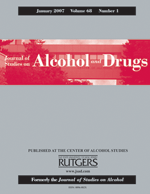Changes in glutamatergic transmission affect many aspects of neuroplasticity associated with ethanol and drug addiction. For instance, ethanol- and drug-seeking behavior is promoted by increased glutamate transmission in key regions of the motive circuit. We hypothesized that because glutamate transporter 1 (GLT1) is responsible for the removal of most extracellular glutamate, up-regulation or activation of GLT1 would attenuate ethanol consumption.
Alcohol-preferring (P) rats were given 24 h/day concurrent access to 15 and 30% ethanol, water and food for 7 weeks. During Week 6, P rats received either 25, 50, 100 or 200 mg/kg ceftriaxone (CEF, i.p.), a β-lactam antibiotic known to elevate GLT1 expression, or a saline vehicle for five consecutive days. Water intake, ethanol consumption and body weight were measured daily for 15 days starting on Day 1 of injections. We also tested the effects of CEF (100 and 200 mg/kg, i.p.) on daily sucrose (10%) consumption as a control for motivated behavioral drinking.
Statistical analyses revealed a significant reduction in daily ethanol, but not sucrose, consumption following CEF treatment. During the post treatment period, there was a recovery of ethanol intake across days. Dose-dependent increases in water intake were manifest concurrent with the CEF-induced decreases in ethanol intake. Nevertheless, CEF did not affect body weight. An examination of a subset of the CEF-treated ethanol-drinking rats, on the third day post CEF treatment, revealed increases in GTL1 expression levels within the prefrontal cortex and nucleus accumbens.
These results indicate that CEF effectively reduces ethanol intake, possibly through activation of GLT1, and may be a potential therapeutic drug for alcohol addiction treatment.
Request Reprint E- Mail: youssef.sari@utoledo.edu

























